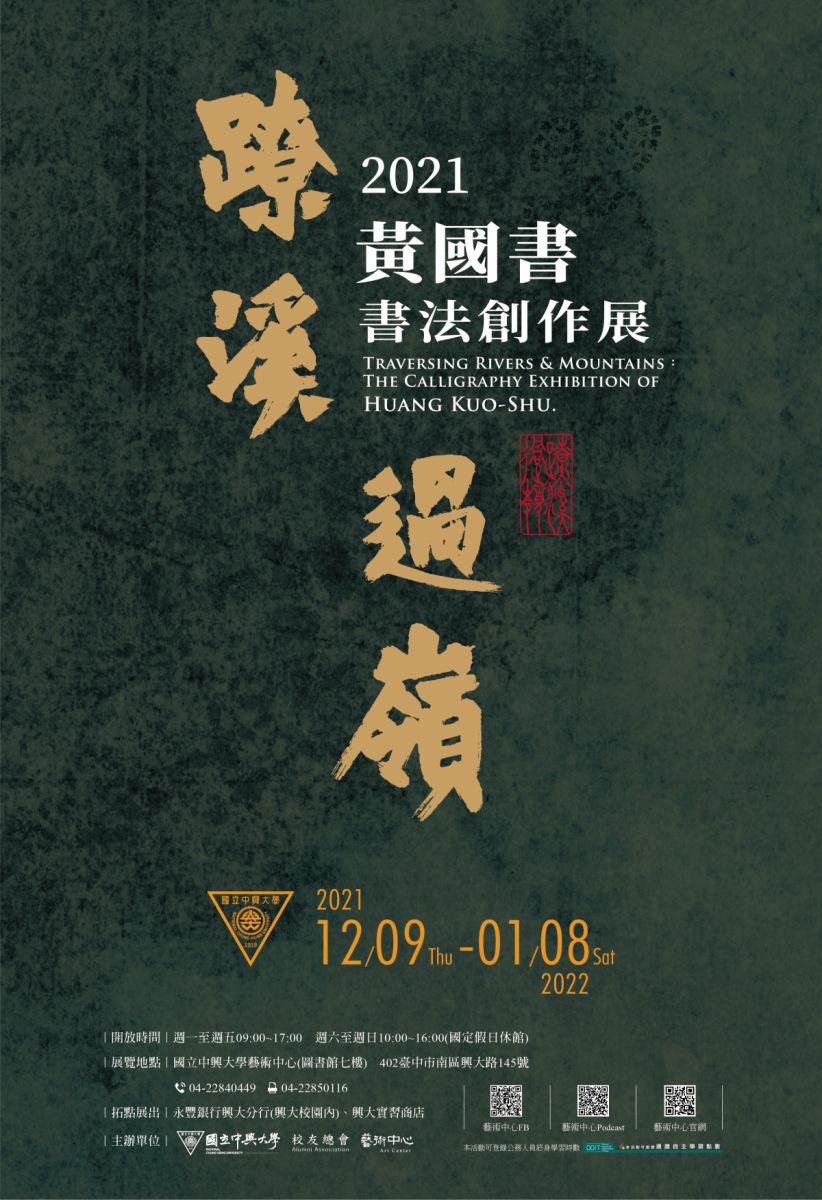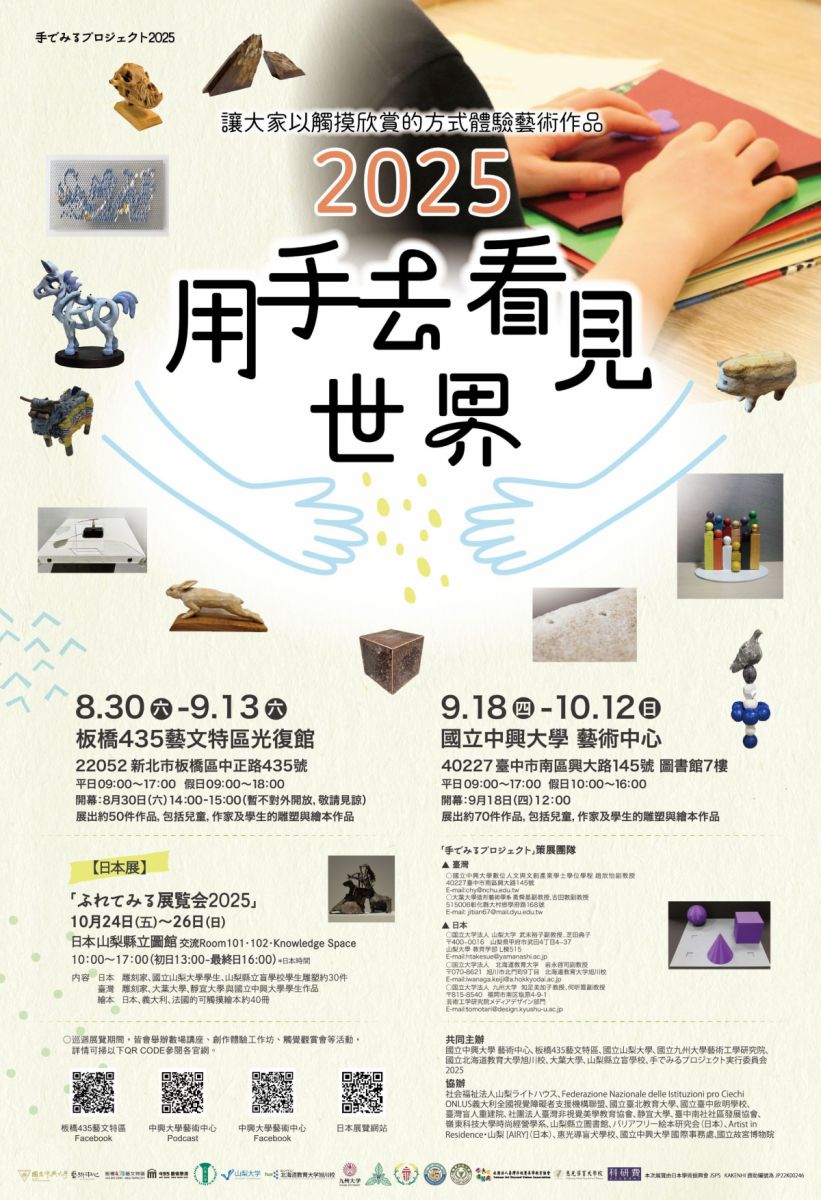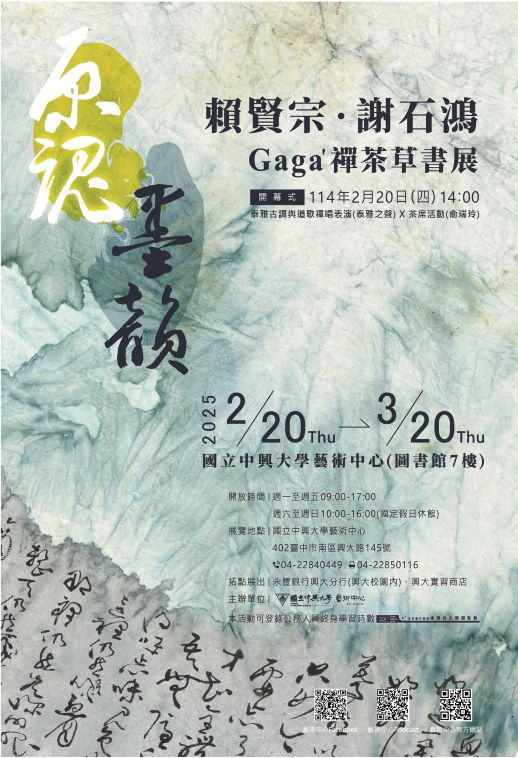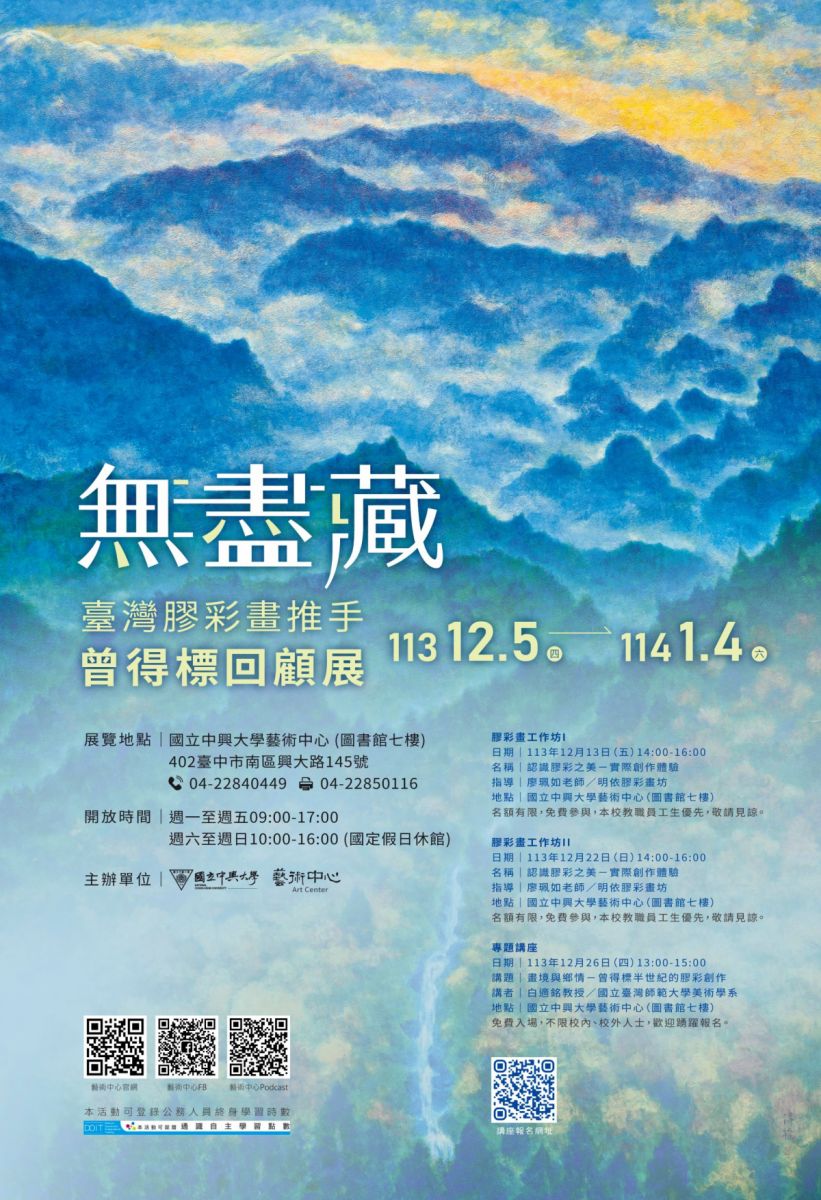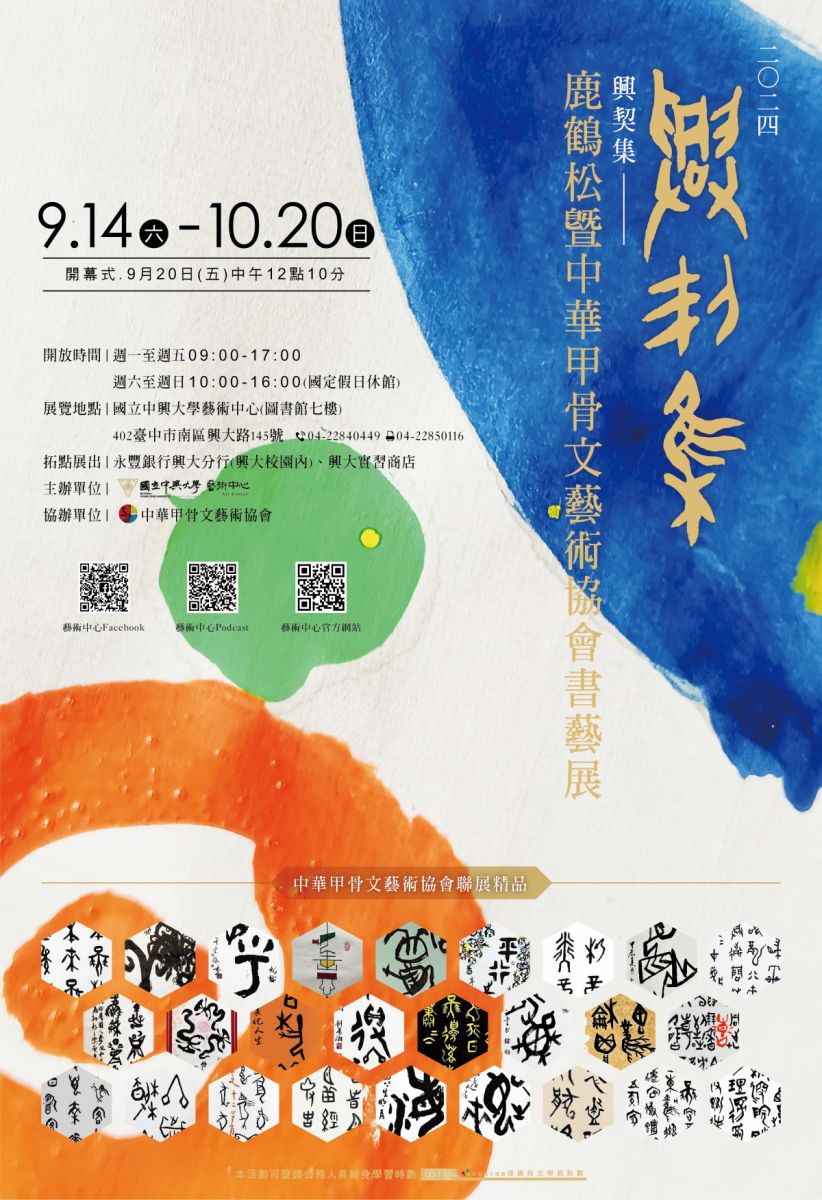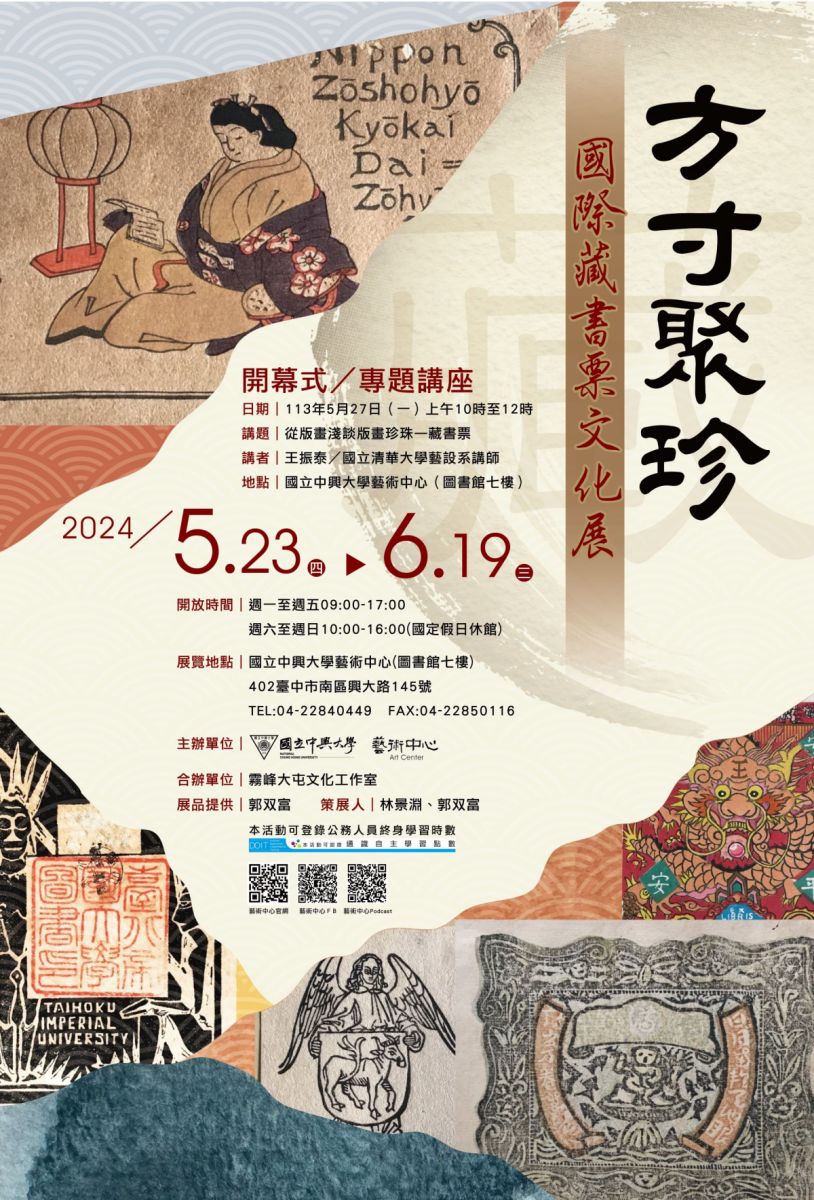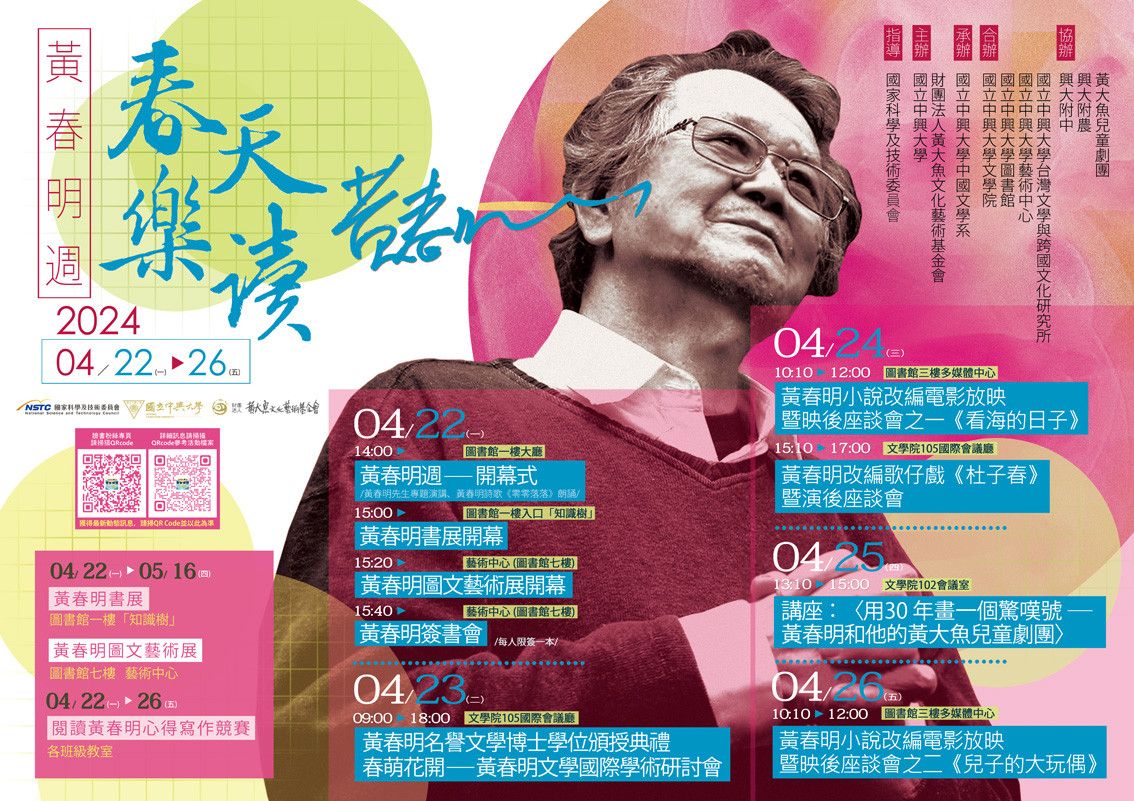To celebrate the 102nd anniversary of National Chung Hsing University, we have specially invited Legislator Huang Kuo-Shu, who is Taiwan’s contemporary cultural practitioner of political work and calligraphical creation as well as the 20th distinguished alumnus of National Chung Hsing University, to hold a solo exhibition at the Art Center of NCHU from December 9, 2021 to January 8, 2022. The exhibition theme of “if there is a road, we sing along the road; if there is no road, we cross mountain and river” is quoted from the lyrics of Taiwan singer-songwriter Hsieh, Ming-You, expressing his concern and gratitude for the land while interpreting contemporary philosophical thinking as well as political work ideas with calligraphy art.
Born in 1964 in Lugu Village, Nantou County, Legislator Huang Kuo-Shu learned calligraphy under the guidance of his grandfather at an early age. He started with regular script of Yan, Chen-Ching and Liu, Kung-Chuan as well as tablet-style script. He took an interest in the running script and cursive script of Song dynasty calligraphers later. Legislator Huang made a figure as a student. Afterwards, under the guidance of Professor Tu, Chung-Kao, he systematically studied the famous tablets and model calligraphy of the past dynasties. He was dedicated to calligraphy for fifty years, building on the shoulder of giants. After the heavy official duties, he still worked hard to cultivate his calligraphy techniques, imported his own calligraphy aesthetics and learned from the predecessors while being innovative, thereby forming his own style. As far as he’s concerned, “modern calligraphy creation is not only to form your own style, but also to convey the literary meaning behind it through calligraphy creation with the shape and feature of the font.”
There are more than a hundred works on display, such as seal character, official script, regular script, running script, cursive script and tablet script, etc. Together with the corresponding character styles echoing the texts and artistic conception, the creations are either interesting or far-reaching when one appreciates it, which achieves a high degree of artistic harmony between text and content, thereby showing the artist’s free creation and profound skills while realizing the aesthetic blending of “visual arts” and “calligraphy.” Moreover, the calligraphy works are based on diverse materials, including traditional classical poetry, Taiwan literature or local spirit of vulgar proverbs, demonstrating his profound knowledge, humanistic care and expectation of himself. We’re looking forward to all art and literature lovers to come here for appreciation.

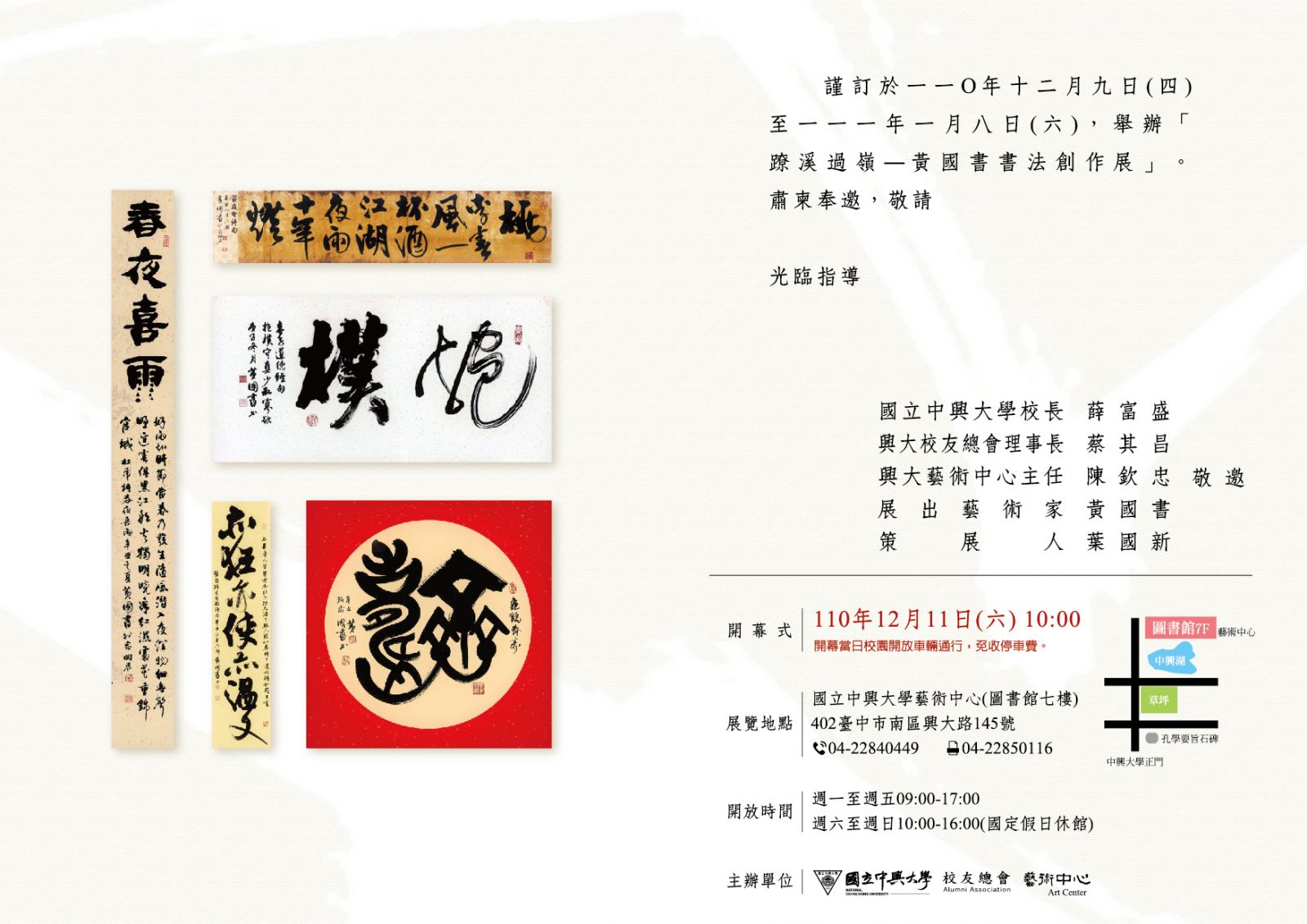
Born in 1964 in Lugu Village, Nantou County, Legislator Huang Kuo-Shu learned calligraphy under the guidance of his grandfather at an early age. He started with regular script of Yan, Chen-Ching and Liu, Kung-Chuan as well as tablet-style script. He took an interest in the running script and cursive script of Song dynasty calligraphers later. Legislator Huang made a figure as a student. Afterwards, under the guidance of Professor Tu, Chung-Kao, he systematically studied the famous tablets and model calligraphy of the past dynasties. He was dedicated to calligraphy for fifty years, building on the shoulder of giants. After the heavy official duties, he still worked hard to cultivate his calligraphy techniques, imported his own calligraphy aesthetics and learned from the predecessors while being innovative, thereby forming his own style. As far as he’s concerned, “modern calligraphy creation is not only to form your own style, but also to convey the literary meaning behind it through calligraphy creation with the shape and feature of the font.”
There are more than a hundred works on display, such as seal character, official script, regular script, running script, cursive script and tablet script, etc. Together with the corresponding character styles echoing the texts and artistic conception, the creations are either interesting or far-reaching when one appreciates it, which achieves a high degree of artistic harmony between text and content, thereby showing the artist’s free creation and profound skills while realizing the aesthetic blending of “visual arts” and “calligraphy.” Moreover, the calligraphy works are based on diverse materials, including traditional classical poetry, Taiwan literature or local spirit of vulgar proverbs, demonstrating his profound knowledge, humanistic care and expectation of himself. We’re looking forward to all art and literature lovers to come here for appreciation.



